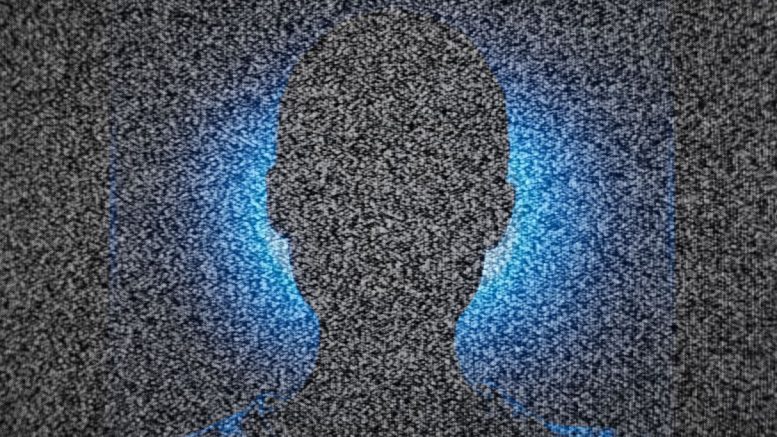What do you see when you close your eyes? It’s always been a dark screen for me, with the static of a crackling television on occasion.
My dreams are a jumble of ideas, but I can’t remember them since I can’t see anything. I don’t have to check myself to tell whether I’m dreaming because my dreams are never anything like reality. Aphantasia, or mental blindness, is a disorder I suffer from. With my eyes, I can see well, but not with my mind.
I can understand and answer questions about a recollection in my head, but I can’t project it into my thoughts or visualize myself in it. I have all of the projector slides and all of the data, but I can’t view the actual image. Aphantasia is thought to affect 4% of the population, however, we can go our entire lives without realizing it.
When I was 21, I was sitting in a coffee shop with my best friend when I discovered what had happened. She talked animatedly about an article she read about aphantasia and how she couldn’t comprehend how it felt. I suddenly realized that I had a new perspective on the world. Daydreaming, counting sheep, and visualizing myself on a beach had always struck me as metaphors. I couldn’t imagine the sensation of mental imagery.
We realized that my mother has it as well after alerting my family. According to a study, if you have congenital aphantasia, there is a 21% chance that your first-degree relative (parent, sibling, or kid) will have it as well. It was difficult not to consider this as a setback at first, but with time, I’ve gained a new appreciation for and interest in how I learn and experience the world.
The term aphantasia was coined by Aristotle, who described Phantasia as a sixth sense of visual imagination. Aphantasia is the lack of mental imagery, whereas hyperphantasia is the presence of extraordinarily vivid images or photographic memories in roughly 10% to 15% of persons.
Despite the fact that awareness of these unseen distinctions in cognition dates back to 340 B.C., Dr. Adam Zeman, professor of cognitive and behavioral neurology at the University of Exeter in the United Kingdom, only identified these words in 2015.
Because behaviorism rejected introspection as a tool to analyze behavior, mental imagery was considered taboo as a research topic in the second half of the twentieth century.
“It’s being adopted by scientists of all types today because we can measure it,” says one scientist. People are discovering that we don’t know nearly as much as we should,” says Joel Pearson, a cognitive neuroscience professor at the University of New South Wales in Australia.
It’s impossible to put into words what it’s like to have aphantasia because it differs from person to person and there’s no conscious equivalent. “People say they believe the imagery is there, but they can’t find it,” Zeman explains.
“We know that [those with aphantasia] must have a very detailed understanding of how things look since they can recognize them in a way.” The sensory information is all in the brain, but it’s difficult for them to use it to create a visual experience without the item.”
Aphantasia is commonly thought to be a visual disorder, although it is actually a multimodal disorder. People with a lack of mental imagery may have a harder time accessing other mental senses (imagining sound, movement, smell, taste, and touch).
For example, I can’t imagine most of my senses. I can’t imagine the taste of my favorite dish or the sensation of being hugged, yet I have a strong inner voice and can hear and remember tunes. This qualifies me as a multisensory aphantasic, as I have a mental impairment in more than one sense, but not all of them.
Some persons suffer from global aphantasia, which Zeman describes as a complete loss of mental sensations. Only 26% of aphantasic subjects reported no internal mental representations in a 2020 study published in Scientific Reports, indicating that most aphantasics perceive unique mixes of the other senses. Despite the fact that patients with aphantasia all lack voluntary visual imagery, we can’t presume that everyone experiences the same experience.
A lot is still unclear about aphantasia because scientists have mostly examined it in terms of visual imagination rather than other senses. Even among visual aphantasics, various persons have different experiences—some have no notion of visual vision, while 63% can see vivid visuals in their dreams.
“Most aphantasia sufferers are fairly certain that they actually dream visually. “It’s just that they’re experiencing it in an involuntary brain state,” Zeman explains.
There are both benefits and drawbacks to having aphantasia. People with aphantasia have a higher average IQ (115 vs. 110 in the general population) and are less impacted by scary stories because they are unable to visualize them. “It’s certainly not a bar to excellent success,” Zeman says. You may think it would stifle creativity, but that’s certainly not the case.”
According to Carla Dance, a PhD researcher at the University of Sussex in the United Kingdom, phantasics have reduced levels of sensory sensitivity and are overwhelmed by “sensory inputs that might be bright lights, loud noises, or the smell of perfume.” Despite this, autobiographical memory and face recognition is more challenging for them.
Because people have developed shortcuts for processing the world, they may not recognize they have aphantasia. “We see that their performance in visual working memory is roughly the same [as the general population].”
“However, once you peek beneath the hood and examine how people are storing this knowledge in memory, you’ll notice that it’s a different mechanism and a different strategy, even though their performance on everyday activities appears to be the same,” Pearson adds.
“Most people with aphantasia have excellent spatial abilities… yet they are unable to place any things in that space.”
My coworkers and I were asked to draw our brains to represent the way we think as part of a neurodiversity exercise at work, but I couldn’t because I don’t think in visuals.
I was frustrated and self-conscious since there was no way for me to participate—I had no choice but to sit and wait while others finished the activity. Even though I don’t like to think of it as a flaw, I was reminded of one aspect in which I’m different from others.
There are simple ways to get around this and include people who have different viewpoints. My coworkers, for example, could have reframed the activity to simply depict how we think rather than drawing what our thoughts look like. Instead of trying to come up with imagery, I could have produced a list of words or emotions to convey how my mind operates.
“Aphantasia is basically a different way of looking at the universe.” Given your visual profile, it comes down to figuring out what learning style you have and what works for you,” Dance adds. “Perhaps [they] can use their auditory imagery as a portal to remembering things if they have particularly good auditory imagery.” We can all benefit from taking a closer look at how we think and what it says about us.





